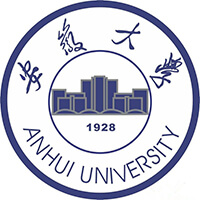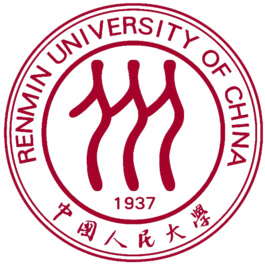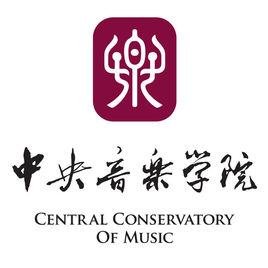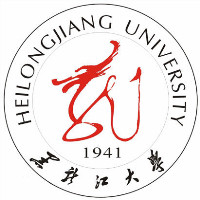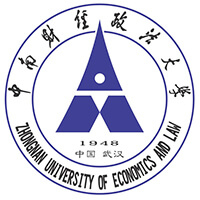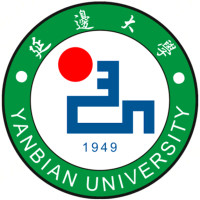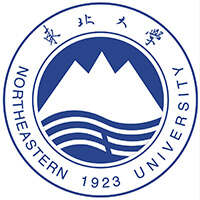2023年英语可数名词变复数的规则和口诀英语可数名词变复数的规则英文讲解(通用5篇)
每个人都曾试图在平淡的学习、工作和生活中写一篇文章。写作是培养人的观察、联想、想象、思维和记忆的重要手段。范文书写有哪些要求呢?我们怎样才能写好一篇范文呢?以下是小编为大家收集的优秀范文,欢迎大家分享阅读。
英语可数名词变复数的规则和口诀 英语可数名词变复数的规则英文讲解篇一
1、词尾直接加s型:students, apples, bags, trees, books, brothers
2、以s、x、sh、ch结尾的名词加es型:glasses, boxes, brushes, matches
3、以辅音字母加y结尾的名词,变y为i加es型:city-cities, baby-babies
4、以元音字母加y结尾的名词,直接加s: boys, toys
5、以f或fe结尾的名词,多数变f为v加es: wives, knives, thief, life, half, leaf, shelf, wolf, 除了roof
6、以o结尾的名词,一般直接加s: radios, zoos, pianos, photos;除了5个特殊的词需要加es: negroes, heroes, potatoes, tomatoes,mangoes.(黑人英雄爱吃土豆和西红柿:薯条蘸番茄酱;最后再吃点芒果)
7、不规则变化的词:foot→ feet, goose→ geese, tooth→ teeth,man→ men, woman→ women, sheep→ sheep, deer→deer
chinese→chinese, japanese→japanese,child→ children,mouse→ mice.不规则变化要特别记,oo常常变ee, foot→feet是一例;男人、女人a改e, woman→women是一例;child复数children要记准,中、日、鹿、绵羊无变化,单数、复数是一家。
第三人称单数(他,她,它)是除了你、我,还有复数以外(他们,她们,它们)的人称。
英语中的不可数名词
水 纸 se 锻炼 ation 信息 食物 水果 羊肉 牛肉 n鸡肉 沙拉 rk 家务 冰冻食品16,tea茶 米饭 tion人口 面包ate 鱼肉 空间
rk c e 恐怖 有趣 时间 r天气 建议你在学习过程中不断积累。
不规则名词复数的单词有哪些?
一、通过内部元音变化的方法来构成复数形式。man→men(男人)
woman→women(女人)foot→feet(英尺,脚)tooth→teeth(牙)goose→geese(鹅)mouse→mice(老鼠)louse→lice(虱子)
二、词尾加-en构成。ox→oxen(牛)
child→children(孩子)
三、以f或fe结尾,在构成复数时,去掉f或fe加-ves。half→halves(半)thief→thieves(贼)wife→wives(妻子)life→lives(生命)knife→knives(小刀)wolf→wolves(狼)calf→calves(小牛)shelf→shelves(架子)leaf→leaves(叶)
loaf→loaves(面包的块、条)sheaf→sheaves(捆)self→selves(自己)
四、单、复数相同的形式。
one sheep(一只羊)→two sheep(两只羊)a deer(一只鹿)→two deer(两只鹿)
a chinese(一个中国人)→two chinese(两个中国人)
五、有些名词只有单数形式。advice(劝告;忠告)information(信息)luggage(行李)knowledge(知识)rubbish(垃圾)furniture(家具)
六、有些名词通常只有复数形式。compasses(圆规)clothes(衣服)pyjamas(睡衣裤)trousers(长裤)breeches(马裤)pants(短裤)goods(货物)
binoculars(双筒望远镜)pliers(钳子)scissors(剪刀)scales(天平)arms(武器)premises(房屋)
七、合成名词,将主体词变为复数形式。passer-by→passers-by(过路人)brother-in-law→
brothers-in-law(姐夫)sister-in-law→
sisters-in-law(嫂子)
八、由man和woman构成的合成名词,两个构成部分都要变成复数。man worker→men workers(男工人)
woman doctor→women doctors(女医生)
九、以字母o结尾的单词,通常情况下在其后加-es。negro→negroes(黑人)
potato→potatoes(土豆,马铃薯)tomato→tomatoes(蕃茄,西红柿)
小学英语可数名词单数变复数规律总结
1.一般情况下,直接加s,如:apple-apples,pig-pigs,book-books等 2.以s、sh、ch、x结尾的名词,加es,如:bus-buses(公车),class-classes(班级),fish-fishes(此时的fish当“鱼的种类”讲),watch-watches(手表),box-boxes(盒子),fox-foxes(狐狸)
3.以元音字母+y结尾的名词,直接加s,如:boy-boys(男孩),toy-toys(玩具)
4.以辅音字母+y结尾的名词,去y改ies,如:family-families(家庭),strawberry-strawberries(草莓)
5.以f或fe结尾的名词,去f或fe改ves,如:wife-wives,knife-knives,wolf-wolves(这三个词的记忆口诀---“妻子”拿着“小刀”杀了“狼”)6.以”o“结尾的名词:(1)有生命的,加es,如:potato-potatoes,tomato-tomatoes,hero-heroes(这 三个词的记忆口诀---”英雄“爱吃”土豆“和”西红柿“)
(2)无生命的,加s,如:photo-photos(照片),radio-radios(收音机)
7.将“oo”改为“ee”的名词,如:tooth-teeth(牙),foot-feet(脚),goose-geese(鹅)8.单复同形的名词:(1)fish-fish(此时fish当“同类鱼的很多条”讲),sheep-sheep(绵羊),paper-paper(纸),chinese-chinese(中国人),japanese-japanese(日本人),people-people(peoples表示“民族”)
(2)不可数名词,如:water(水),rice(米饭),milk(牛奶),juice(果汁),bread(面包),tea(茶),orange(橙汁)
9.不规则变化的名词:
(1)man-men,woman-women(记忆方法---“男人”“女人”将a改e)延伸:policeman-policemen,policewoman-policemen(2)child-children(孩子)(3)mouse-mice(老鼠)
(4)根据中文意思变化的名词,如:i-we(我-我们),you-you(你-你们),he/she/it-they(他/她/它-他们),this-these(这个-这些),that-those(那个-那些)
现在进行时
一.意义——当表示现在正在进行的动作或正在发生的事。二.构成: be(am, is ,are)+动词现在分词-ing形式 肯定句: 主语 + be + 现在分词v-ing(+ 其他)i’m doing my homework now.否定句:主语+be+not+动词-ing +其他.i’m not doing my homework now.一般疑问句:be+主语+动词-ing +其他?
are you doing your home work now? yes, i , i’m not.特殊疑问句:特殊疑问词+be+主语+动词-ing+其他? what are you doing now ? 三.现在分词的构成:
(1)一般在动词末尾直接加ing,(2)以不发音字母e结尾的动词,先去掉e,再加ing,如 skate →skating make →making dance → dancing write → writing have → having ride → riding come → coming(3)以重读闭音节结尾的动词,中间只有一个元音字母,词尾只有一个辅音字母,应双写末尾的辅音字母,再加ing, 如: putting running beginning stopping swimming shopping jogging sitting getting forgetting letting 四.时间标志——now,句前的look ,listen
一般现在时
一.意义:表示经常发生的事情,动作或存在的状态 二.构成及变化 动词的变化。
肯定句: 主语+be(am,is,are)+其它。如: i am a boy.我是一个男孩。否定句:主语+ be + not +其它。如:he is not a worker.他不是工人。
一般疑问句:be +主语+其它。如:-are you a student?-yes.i am./ no, i'm not.特殊疑问句:疑问词+一般疑问句。如:where is my bike?
2.行为动词的变化。当主语为第一,二人称及复数时,助动词为do 肯定句:主语+动词原形(+其它)。如: we often play basketball after school.否定句:主语+ don't+动词原形(+其它)。如:we don’t play basketball after school.一般疑问句:do +主语+动词原形+其它? 如: do you often play basketball after school l? yes, we do./ no, we don't.特殊疑问句:疑问词+以do开头的一般疑问句? 如: what do you often do after school ? 当主语为第三人称单数时 , 助动词为does 肯定句:主语+动词三单式(+其它)。如: he swims well.否定句:主语+ doesn’t+动词原形(+其它)。如:he doesn’t swim well..一般疑问句:does +主语+动词原形+其它。如:does he swim well ? yes, he does./ no, he doesn't.特殊疑问句:疑问词+以does开头的一般疑问句? 如: how does your father go to work? 三.第三人称单数的动词变化规则(只有在第三人称为主语的肯定句中,动词才用三单式)(1)多数动词直接加s: runs gets likes collets takes plays climbs.(2)结尾是s, x, sh, ch, o,前为辅音字母, 结尾加es : watches teaches goes does washes crosses mixes brushes(3)动词末尾y前为辅音:将y改为i加es: study→studies fly→flies carry→carries cry→cries 但在y前如果为元音则直接加s: buys says 四.时间标志:always , usually , often , sometimes ,every
一般将来时 一.意义:
表示将来某个时间要发生的动作或存在的状态,也表示将来经常或重复发生的动作,常与表示将来的时间状语连用。如:tomorrow , soon , next monday , next year , next weekend , this afternoon , this evening 二.构成及变化
一般将来时常用的两种结构
be going to+动词原形 : 表示打算、准备做的事或即将发生或肯定要发生的事。
shall/will+动词原形 : 表示将要发生的动作或情况,没有太多的计划性, 还用来表示意愿 going to +动词原形 1.肯定句 主语+
be(am /,is,/ are)going to +动词原形+其它成份
my sister is going to learn english next year.我姐姐准备明年学英语。
2.否定句 主语+be(am / is / are)not going to +动词原形 +其它成份
i am not going to(go to)the cinema tonight.我今天晚上不打算去看电影。
3.一般疑问句 be(am / is / are)+主语+going to+动词原型+其它成份? is your father going to play basketball with you ?no , he isn’t.你父亲打算和你去打篮球吗?不。
4.特殊疑问句 特殊疑问词(wh-)+一般疑问句 ?
where are you going to spend spring fesital.? 春节你打算在哪过?
5.注意: be going to 结构后面习惯上不跟 go,come 等表位移的动词,一般用该动词的进行时形式表示。如: he’s going to new york next /shall +动词原形
(在书面语中,主语是第一人称时,常用shall ,在口语中,所有人称都可以用will)
1.肯定句 主语+will/shall+动词原形+其它成份
i(shall)write to him next week.下周我将给他写信。2.否定句 主语 + will /shall+ not + 动词原形 +其它成份 they won’t watch tv this evening.今天晚上他们不看电视。3.一般疑问句 will/shall+主语 +动词原形+其它成份
will you stay at home with us tomorrow ? 明天你和我们呆在家里好吗? 4.特殊疑问句
特殊疑问词(wh-)+一般疑问句
when will your father be back? 你爸爸什么时侯回来? 附 : shall i /we 常用来征求对方意见,而问对方是否愿意,或者表示客气的邀请,常用will you?他们的回答比较灵活。1.shall we go to the park ? 肯定sure , let’s go.否定 no , let’s go to the you please come to my birthday party next week ? 肯定yes, i will./ sure.否定 i’m sorry.i’m afraid i can’t.小升初英语必考语法之there be句型
一.there/here be结构
there be结构表示“某时、某地存在着什么事物或人”,包括there is、there are、there was、there were。
there be结构与它类似,用法也完全相同,只不过是表示“这里存在着什么事物或人”。
二.和have、has、had的区别:
(1)there be 句型表示:在某地有某物(或人);而have、has、had表示:某人拥有某物。
(2)在there be 句型中,主语是单数,be 动词用is;主语是复数,be 动词用are;如有几件物品,be 动词根据最近be 动词的那个名词决定即“就近原则”。
(3)there be 句型的否定句在be 动词后加not,一般疑问句把be 动词调到句首。
(4)there be句型与have(has)的区别:there be 表示在某地有某物(或人);have(has)表示某人拥有某物。
(5)some和any在there be 句型中的运用:some 用于肯定句,any 用于否定句或疑问句。(6)and 和or 在there be句型中的运用:and 用于肯定句,or 用于否定句或疑问句。
(7)针对数量提问的特殊疑问句的基本结构是: how many + 名词复数+ are there + 介词短语? how much + 不可数名词+ is there + 介词短语?
(8)针对主语提问的特殊疑问句的基本结构是: what’s + 介词短语?(9)there be结构一般用在句子的开头,而have等词只能用于某一个主语后面。练一练:
1、用恰当的be动词填空。
1)there ______ four seasons in a year.2)there ______not any trees two years ago.3)---______there a post office near your school?---yes, there ______.4)---how many stops ______there?---there______only one.5)there ______not any stamps on the envelope.6)______ there any birds in the tree? 7)there______ a shopping center near our school last now there______ no one.8)there ______only three of us: my dad, my mum and me.9)here ______some bread for you.10)in new york, there ______ a lot of rain in spring.2、选用“have, has, had, there is, there are, there was, there were”填空。
1)i ______a good father and a good mother.2)______ a telescope on the desk.3)he ______a tape-recorder.4)______a basketball in the playground.5)they ______ a nice garden.6)my father ______ a story-book last year.7)______a reading-room in the building? 8)what does mike ______? 9)______any books in the bookcase? 10)how many students ______in the classroom? 11)______a story-book on the table a moment ago.12)what do you ______? 13)my parents ______ some nice pictures.14)______ some maps on the wall.15)______ a map of the world on the wall.16)david’s friends ______ some tents.17)__________ many children on the be 结构的意义及形式
there be 结构主要用以表达“某处(某时)有某人(某物)”,其基本句型为“there be + 某物或某人 + 某地或某时”,其中there 是引导词,没有词义;be是谓语动词;“某人或某物”是句子的主语;“某地或某时”作句子的状语,多是介词短语。如:
there is a football under the chair.椅子下面有一个足球。
引导语 谓语动词 主语 介词 短语(某地)
there be结构中的动词be的确定
be 结构中的谓语动词be在人称和数上应与其后的主语保持一致。主语是不可数名词或单数可数名词时用is,是复数时用are。如:
there is a flower in the bottle.瓶里有一朵花。
there is some money in the purse.钱包里有些钱。
2.若句子中有几个并列的主语时,be的形式要与离其最近的一个主语在人称和数上保持一致。如:
there is a boy, a girl and two women in the house.房子里有一个男孩,一个女孩和两个妇女。
there are ten students and a teacher in the office.办公室里有十个学生和一个教师。
另外,在陈述句中为了强调地点,也可将介词短语提置句首。如:
in the tree there are five birds.树上有五只鸟。
:there be 结构的句型转换
1.否定句: there be的否定式通常在be后加not构成(在口语中be时常与not缩写在一起)。如果句中有some,一般要变成any。如:
there are some children in the picture.→there aren't any children
in the picture.2.一般疑问句及其答语:把be提到there前,首字母大写,句末用问号即可。其肯定答语是yes, there is / are;否定答语为no, there isn't / aren't。如:
-are there two cats in the tree?
-yes, there are.(no, there aren't.)
3.特殊疑问句及其回答:①提问句子的主语(包括主语前的修饰语)时,句型一律用“what is + 地点介词短语?”(无论主语是单数还是复数都用is)。如:
there are some birds in the tree.→what's in the tree?
②就there be后面的地点状语进行提问时,句型用“where is / are + 主语?”如:
there is a car in the street.→where is the car?
③提问可数名词(主语)前的数量时,用how many,句型结构为“how many + 复数名词 + are there + 其它?”(主语无论是单数还是复数,be通常要用are)。如:
there is a cat under the bed.→how many cats are there under the
bed? have/has got句型:它表示某物归某人所有,是一种所属关系,主语为人。have/has got句型:
a、否定句:在have或has后加not,缩写为haven’t或hasn’t.b、疑问句:把have或has提前
转换:have got=have has got=has
a、在只含有have的句子中,变否定句在have前加don’t,其余不变。
变疑问句在句首加do,其余不变。
b、在只含有has的句子中,变否定句在has前加doesn’t,has变成have。
变疑问句在句首加does,has变成have。
step3、对话练习:work in groups(比比哪个小组表现最佳)
1)a角色:i have got some
b角色:i haven’t got any(brothers,sisters,aunts,uncles,grandparents)
c角色:have you got any
2)a角色:she has got some
b角色:she hasn’t got any
(carrots,melons,potatoes,tomatoes,milk,juice,apples)
c角色:has she got any
剑桥少儿英语预备级词汇
pen 钢笔 ruler 格尺
book 书 eraser 橡皮
bag 书包
pencil-case 铅笔盒
desk 书桌
blackboard 黑板
chair 椅子
big 大的 small 小的walk 走
kick 踢
stop 停
jump 跳
football 足球
baseball 棒球
basketball 篮球
i 我 you 你
he 他
she 她
it 它
they 他/她/它们
we 我们
best 最好的put 放
shop 商店
parrot 鹦鹉
mouse 老鼠
animal 动物
spider 蜘蛛
hello 你好
monkey 猴子
panda 熊猫
dog 小狗
cat 猫
apple 苹果
cake 蛋糕
cat 猫
bear 熊
monkey 猴子
candy 糖
bamboo 竹子
banana 香蕉
elephant 大象
fish 鱼
frog 青蛙
giraffe 长颈鹿
horse 马
hen 母鸡
house 房子
kite 风筝
jacket 夹克
ice 冰
ice-cream 冰激凌
lemon 柠檬
mango 芒果
pineapple 菠萝
watermelon 西瓜
orange 桔子
rabbit兔子
snake 蛇
turtle 海龟
umbrella 雨伞
vest 背心
window 窗户
fox 狐狸
zebra 斑马
paint 颜料
brush 刷子
blue 蓝色的
green 绿色的 yellow 黄色的pink 粉色的 black 黑色的red 红色
ant 蚂蚁
bike 自行车
purple 紫色的grey/gray 灰色的 brown 棕色的white 白色的orange 橘色的 farm 农场
zoo 动物园
park 公园
classroom 教室
shop 商店
street 街道
bookshop 书店
garden 花园
sea 海洋
lion 狮子
goat 山羊
sheep 绵羊
crocodile 鳄鱼
carrot 胡萝卜
pea 豆子
onion 洋葱
sausage 香肠
skirt 裙子
shirt 衬衫
shoes 鞋子
socks 袜
handbag 手提
glasses 眼镜
shorts 短裤
trousers 裤子
jeans 牛仔
hat 帽子
dress 裙子
sunglasses 太阳镜
cap 帽子
bus 公共汽车
jeep 吉普车
ship 轮船
plane 飞机
train 火车
bike 自行车
boat 小船
hair 头发
mouth 嘴
eyes 眼镜
nose 鼻子
feet 脚
legs 腿
arms 胳膊
ears 耳朵
hands
my 我的 your 你的 his 他的her 她的 our 我们的 their 她/他/它们的 food 食物
bread 面包
rice 大米
stick 小木棒
aa det 一、一个;add v 加;afternoon n 下午;again adv又、再;alphabet n字母表;am v 是;an det一、一个;and conj和;animal n 动物;ann n 安;answer n 答案,回答;answer v 回答;apple n 苹果;are v 是;arm n 手臂;armchair n 扶手椅;ask v问;at prep在,于,向,在……方面
bbaby n 婴孩;badminton羽毛球;bag n 袋子;ball n 球;banana n 香蕉;baseball n 棒球;basketball n 篮球;bath n淋浴,浴室;bathroom n浴室,盥洗室;be v是;beach n 海滩;bean n 豆;beautiful adj 美丽的,很好的;bed n 床;bedroom n 卧室;behind prep在……后面;ben n 本(人名);between prep 在……中间;big adj 大的;bike n 自行车;bill n 比尔(人名);bird n 鸟;birthday n 生日;black adj 黑色的;blue adj 蓝色的;board n 木板;boat n 小船,艇;body n身体;book n书;bookcase n书架,书柜;bounce v弹跳,(球)弹回;box n 盒子,箱;boy n男孩;bread n面包;breakfast n早餐;brother n兄弟;brown adj褐色的,棕色的;burger n汉堡包;bus n 公共汽车;bye(-bye)再见
ccake n蛋糕;camera n照相机;can/cannot/can't v能不能;car n小汽车;carrot n胡萝卜;cat n猫;catch v抓住;赶上(车船等);chair n椅子;chicken n小鸡,鸡肉;child/children n孩子/孩子们;class n班级;课;classroom n教室;clean adj干净的;clock n时钟;close v关,关闭;clothes n衣服;coconut n椰子;colour n颜色;colour(in)v涂色;computer n计算机;correct adj正确的;cow n奶牛;crocodile n鳄鱼;cross n叉;cross v横过;划叉;cupboard n壁橱
ddad(dy)n爸爸;day n天;日;desk n课桌;dining room n餐厅;dirty adj脏的;do/don't v做/不做;dog n狗;doll n洋娃娃;door n门;draw v画;drawing n绘画;图画;dress n连衣裙;drink n+v饮料;喝;duck n鸭子
eear n耳朵;eat v吃;egg n鸡蛋;eight num八;elephant n大象;english n+adj英语;英国的;enjoy v喜欢;eraser n橡皮;example n例子;eye n眼睛
fface n脸;family n家庭;father n父亲;favourite adj最喜欢的;find v找到;发现;fish(s+pl)n鱼;fishing n钓鱼;five num五;floor n地面;楼层;flower n花;fly v飞;food n食物;foot/feet脚n;for prep为;给;替;four num四;french fries n炸薯条;friend n朋友;frog n青蛙
ggame n游戏;garden n花园;giraffe n长颈鹿;girl n女孩;give v给;glasses眼镜;go v去;goat n山羊;good adj好的;good-bye再见;grandfather n祖父;爷爷;grandmother n祖母;奶奶;green adj绿色的;grey(or gray)adj灰色的;guitar n吉它
hhair n头发;hall n大厅;厅;hand n手;handbag手提包n;happy(birthday)adj快乐的;hat n帽子;have(got)v有;he pron他;head n头;helicopter n直升飞机;hello喂;你好;her pron她 ;here adv这里;him pron他;hippo n河马;his pron他的;hit v击;打;hobby n爱好;hockey n曲棍球;horse n马;house n房子;how many int多少;how old int多大
ii pron我;ice cream n冰淇淋;in prep of place在……里面;in front of prep在……前面;is v是;it pro它n
jjacket n夹克衫;jeans n牛仔裤;juice n果汁;jump v跳;跳跃
kkick v踢;kim n 基姆(人名);kitchen n厨房;kite n飞筝;know(don't know)v知道;认识
llamp n台灯;灯;learn v学习;leg n腿;lemon n柠檬;lemonade n柠檬水;lesson n课;letter(as in alphabet)n字母;like v+prep喜欢;像;lime n酸橙;line n线;listen(to)v听;live v居住;生活;living room n起居室;lizard n晰蝎;long adj长的;look v看;look at v看(某物);love v热爱;喜欢;lunch n午饭 m
man/men n男人;mango n芒果;mat n小块地毯;may(girl's name)n梅(女名);me pron我(宾格);meat n肉;milk n牛奶;mirror n镜子;monkey n猴子;monster n怪物;mother n母亲;motorbike n摩托车;mouse/mice n老鼠;mouth n嘴 ;mum(my)n妈妈;my det 我的n
name n名字;new adj新的;next to prep与……相邻的;nick n尼克(男名);night n晚上;nine num九;no det不;nose n鼻子;not adv不;没有;now现在;number n数字
oof prep属于……的;oh 阿;呀;ok dis行;可以;old adj老的;on prep在……上面;one num一;onion n洋葱;open v打开;or conj或者;否则;orange n桔子;our pron我们的p
page n页;paint v颜料;涂颜色;painting n画;pardon inter请原谅;part n部分;pat n帕特(男名);pea n碗豆;pear n梨;pen n钢笔;pencil n铅笔;phone n+v电话;打电话;photo n照片;piano n钢琴;pick up v拾起;捡起;picture n图片;pineapple n菠萝;pink adj粉红色;plane n飞机;play(with)v玩;please inter请;point v指(向);potato n土豆;purple adj紫色的;put v放;搁
qquestion n问题
rradio n收音机;read v读;阅读;red adj红色的;rice n米饭;ride n+v坐车;骑(车马);right(=correct)adj+dis正确的 ;robot n机器人;room n房间;ruler n尺子;run v跑
ssad adj伤心的;sam n山姆(男名);sausage n香肠;say v说;school学校n;sea n海;see v看见;sentence n句子;seven num七;she pron她;sheep(s+pl)n绵羊;shirt n衬衣;shoe n鞋;short adj短的;矮的;show v展示;sing v唱;sister n姐姐;妹妹;sit(down)v坐下;six num六;skirt n裙子;sleep v睡觉;small adj小的;snake n蛇;;so dis这样;如此;soccer n足球;sock n袜子;sofa n沙发;some det一些;song n歌曲;sorry对不起;spell v拼写;spider n蜘蛛;sport n体育运动;stand(up)v站立;start v开始;stop n+v停止;story n故事;street n街道;sue n苏(女名);sun n太阳;supper n晚饭;swim v游泳
tt-shirt n t恤;table n桌子;table tennis n乒乓球;talk v谈话;teacher n老师;television/tv n电视;tell v告诉;ten num十 ;tennis n网球;test n+v测试;thank you谢谢你 ;that det+pron那,那个;the det指这个,那个(定冠词);their det他们的;她们的;它们的;them pron他们;她们;它们
then dis 那时;那么 ;there adv那里;these det+p 这些;they pron他们;她们;它们;this det+pron这;those det+pron那些 ;three num三;throw v扔;tick n+v勾;打勾;tiger n老虎;to prep去某个方向;today adv今天;tom n汤姆(男名);tomato n西红柿;toy n玩具;train n火车;tree n树;trousers n裤子;try v试一试;two num二
uugly adj丑的;under prep在……下面;understand v明白;us pron我们(宾格)
vvery adv很;非常
wwalk v走路;wall n墙壁;want v想要;watch v观看;water n水;watermelon n西瓜;we pron我们;wear v穿;戴;well dis好;what int什么;where int哪里;which int哪一个;white adj白色的;who int谁;whose int谁的;window n窗户;with pron和;woman/women n女人;word n词;write v写
yyellow adj黄色的;yes是,是的;you pron你;你们;young adj年轻的;your pron你的;你们的z
zoo n 动物园
英语可数名词变复数的规则和口诀 英语可数名词变复数的规则英文讲解篇二
1.一般情况下,直接加s,如:apple-apples,pig-pigs,book-books等
2.以s、sh、ch、x结尾的名词,加es,如:bus-buses(公车),class-classes(班级),fish-fishes(此时的fish当“鱼的种类”讲),watch-watches(手表),box-boxes(盒子),fox-foxes(狐狸)
3.以元音字母+y结尾的名词,直接加s,如:boy-boys(男孩),toy-toys(玩具)
4.以辅音字母+y结尾的名词,去y改ies,如:family-families(家庭),strawberry-strawberries(草莓)
5.以f或fe结尾的名词,去f或fe改ves,如:wife-wives,knife-knives,wolf-wolves,life-lives(这三个词的记忆口诀---“妻子”拿着“小刀”杀了“狼”)
6.以”o“结尾的名词:(1)有生命的,加es,如:potato-potatoes,tomato-tomatoes,hero-heroes(这 三个词的记忆口诀---”英雄“爱吃”土豆“和”西红柿“)(2)无生命的,加s,如:photo-photos(照片),radio-radios(收音机)
7.将“oo”改为“ee”的名词,如:tooth-teeth(牙),foot-feet(脚),goose-geese(鹅)
8.单复同形的名词:(1)fish-fish(此时fish当“同类鱼的很多条”讲),sheep-sheep(绵羊),paper-paper(纸),chinese-chinese(中国人),japanese-japanese(日本人),people-people(peoples表示“民族”)
(2)不可数名词,如:water(水),rice(米饭),milk(牛奶),juice(果汁),bread(面包),tea(茶),orange(橙汁)
9.不规则变化的名词:(1)man-men,woman-women(记忆方法---“男人”“女人”将a改e)
延伸:policeman-policemen,policewoman-policemen
(2)child-children(孩子)
(3)mouse-mice(老鼠)
(4)根据中文意思变化的名词,如:i-we(我-我们),you-you(你-你们),he/she/it-they(他/她/它-他们),this-these(这个-这些),that-those(那个-那些)
同学们,快来看看自己做的怎么样吧!
小学英语可数名词单数变复数规律总结
写出下列名词的复数形式:
i this that
watch
child
photo
diary(日记)day(天)foot book dress(连衣裙)tooth
sheep
box
strawberry
wolf peach yo-yo(悠悠球)
sandwich
man woman paper water juice tea
mouse there are 56
(people)in china.答案:we
these those
watches
children
photos
diaries days
feet books
dresses
teeth
sheep
boxes
strawberries wolves
peaches yo-yos(悠悠球是“无生命”的,另外含有-符号的词是一个词,因此在结尾加s)
sandwiches
men women paper
water juice tea mice
peoples(这句话的意思是---“中国有56个民族”)
英语可数名词变复数的规则和口诀 英语可数名词变复数的规则英文讲解篇三
小学英语可数名词单数变复数规律
1.一般情况下,直接加s,如:apple-applespig-pigsbook-books
pencil-pencils 2.如果单词以s、sh、ch、x结尾的名词,加es,如:bus-buses(公车)class-classes(班级)watch-watches(手表)box-boxes(盒子)fox-foxes(狐狸)3.以y结尾的单词,元音字母+y的,直接加s: 如:boys、babys;以辅音字母+y结尾的名词,把y改成i加es,如:family-families(家庭)strawberry-strawberries(草莓)story-stories(故事)4.如果单词以f或fe结尾的名词,把f或fe改成v加es,如:wife-wives, knife-knives 5.如果单词以”0“结尾:
(1)有生命的,加es,如:potato-potatoes,tomato-tomatoes,hero-heroes(2)无生命的,加s,如:photo-photos(照片),radio-radios(收音机)6.将“00”改为“ee”的名词,如:tooth-teeth(牙),foot-feet(脚),goose-geese(鹅)7.单复同形的名词:
fish-fishsheep-sheep(绵羊)paper-paper(纸)people-people(peoples表示“民族”)8.不规则变化的名词:
(1)man-men, woman-women
延伸:policeman-policemen, policewoman-policewomen(2)child-children(孩子)
(3)mouse-mice(老鼠)
(4)根据中文意思变化的名词,如:i-we(我-我们),you-you(你-你们),he/she/it-they(他/她/它-他们),this-these(这个-这些),that-those(那个-那些)
巩固练习
一、写出下列名词的复数形式
___________ _____________ _______________ __________ _____________
______________ _____________ ______________ y _____________ ___________ ______________ ________________
报名热线:0759-6638806
开设 同步提高班、特色精英班、vip一对一
地址:创业南路23号(富莱酒店正对面家用生活超市三楼)
se __________ _____________ ______________ ____________ ____________ _______________ ___________ _____________ ______________ _____________
_____________
_______________
二、选择填空
________on the are very photoes photos a photo photos kind of car ________made inare four________and two_______in the se, germen b japaneses, se,german se, germans ’s _________art b.a d are boys have bread breads pieces of bread piece of bread old man wants boxes of apples boxes of apple box of apples boxs of apples ______some_______in the ,fish , fishs , fishs ,fish _____two _______in the watch watches watch watches should clean________twice a tooth teeth _____ meeting room is near the reading r r’s rs’ rs britain _____ are all painted boxes s boxes box s box come from different ______ y
ies
c.a country
ys many ______ do you see in the picture?
报名热线:0759-6638806
开设 同步提高班、特色精英班、vip一对一
地址:创业南路23号(富莱酒店正对面家用生活超市三楼)
s es
tomato teachers
teachers teacher
teacher are some ______ in these …pencil-boxes
…pencils-box …pencil-box
…pencils-boxes are some ________ on the b.a sheep s are some new books in the school are ____ ens' en en's 18.i have worn out my shoes, so i want to buy a new rs 's handwriting is better than any other ______ in his ts ts t's ts' hospital is a bit far from 's about minutes's walk minute's walk minutes walk minutes' walk
三.填入所给名词的正确形式 1.i have two_____(knife) are many _____ here.(box) are many _____ on the road.(bus)4.a few _____ are drawing on the wall.(boy) _____ are playing football now.(child)
四、请用括号中名词的复数形式填空 at those _______.(child)
2.i can see a __________ standing near the door.(policeman) you want some ________ for dinner?(potato) autumn, you can see a lot of _______ on the ground.(leaf) has two is blue , the other is yellow.(box)
报名热线:0759-6638806
开设 同步提高班、特色精英班、vip一对一
地址:创业南路23号(富莱酒店正对面家用生活超市三楼)
________ live in this building.(family)
五.选择正确的词形 how many(radioes, radios)can you see? 2 there are 36(boys, boies)in my class.3 look at those(sheeps, sheep).4 i don’t want(a, an)old cup.5 give me that(box, boxes), please.六、将以下单复数句进行转换 1 this is a knife.______________________________________ 2 that is a tomato.______________________________________ 3 that child is very good._____________________________________ 4 these are mice.______________________________________ 5 those are children.______________________________________
报名热线:0759-6638806
开设 同步提高班、特色精英班、vip一对一
地址:创业南路23号(富莱酒店正对面家用生活超市三楼)
英语可数名词变复数的规则和口诀 英语可数名词变复数的规则英文讲解篇四
英语可数名词变复数的规则
英语名词单数变复数主要有以下规则:
一、绝大多数的可数名词的复数形式,是在该词末尾加上后辍-s。读音变化:结尾是清辅音读[s],结尾是浊辅音或元音读[z]。
例:friend→friends;cat→cats;style→styles;sport→sports;piece→pieces
二、凡是以s、z、x、ch、sh结尾的词,在该词末尾加上后辍-es构成复数。读音变化:统一加读[iz]。
例:bus→buses;quiz→quizzes;fox→foxes;match→matches;flash→flashes box →boxes;watch →watches;actress →actresses;class →classes;coach(长途车)→coaches;dress →dresses;sandwich →sandwiches;toothbrush →toothbrushes;waitress(女侍者)→waitresses
三、以辅音字母+y结尾的名词,将y改变为i,再加-es。读音变化:加读[z]。例:candy→candies;daisy(雏菊)→daisies;fairy→fairies;lady→ladies;story→stories
strawberry →strawberries;baby →babies;puppy →puppies;library →libraries;dictionary →dictionaries;cherry →cherries;activity →activities
四、以-o结尾的名词,如果不是外来词或缩写,就加-es,否则加-s构成复数。(有生命的加es,无生命的加s)读音变化:加读[z]。例:tomato→tomatoes;potato→potatoes;torpedo(鱼雷)→torpedoes;bingo(彩票式游戏)→bingoes 反例:silo(青贮塔)→silos;piano→pianos(外来词);photo→photos;macro(宏指令,计机算语言)→macros(缩写词)
五、以-f或-fe结尾的名词,多为将-f或-fe改变为-ves,但有例外。读音变化:尾音[f]改读[vz]。例:knife→knives;life→lives;leaf→leaves;staff(员工)→staves;scarf(围巾)→scarves
目前搜集的直接加s:roof-roofs, belief-beliefs,gulf(海湾)-gulfs, serf(农奴)-serfs,safe-safes,chief(负责人)-chiefs 这几个可变可不变: scarf-scarfs,handkerchief-handkerchiefs
六、以-us结尾的名词(多为外来词),通常将-us改变为-i构成复数。读音变化:尾音[es]改读[ai],其中[kes]要改读为[sai],[ges]要改读为[dvai]。例:fungus(真菌)→fungi;abacus(算盘)→abaci;focus(焦点)→foci;cactus(仙人掌)→cacti;cestus(拳击用的牛皮手套)→cesti
七、以-is结尾的名词,通常将-is改变为-es。读音变化:尾音[is]改读[i:z]。
例:axis(轴线)→axes;basis→bases;naris(鼻孔)→nares;hypothesis(假设)→hypotheses;restis(索状体)→restes
八、以-ix结尾的名词,通常将-ix改变为-ices,但有例外。读音变化:尾音[iks]改读[isi:z]。例:matrix(矩阵)→matrices;directrix(准线)→directrices;calix(杯状窝,盏)→calices;appendix(阑尾)→appendices 反例:affix(粘住,使固定)→affixes
九、以-um结尾的名词,将-um改变为-a。读音变化:去掉鼻尾音[m]。例:forum(论坛)→fora;stadium(体育场)→stadia;aquarium(水族鱼缸)→aquaria;datum(数据)→data;vacuum(真空,空虚)→vacua
十、以-a结尾的名词,在该词末尾加上后辍-e。读音变化:尾音[e]改读[i:]。
例:larva(昆虫的幼虫)→larvae;formula(公式)→formulae;ala(翼)→alae;media(媒介)→mediae;hydra(九头蛇,水螅)→hydrae
十一、部分单词的复数形式不变。读音变化:保持原音。
例:fish→fish;sheep→sheep;cattle→cattle;deer→deer;salmon(蛙、三文鱼、大马哈)→salmon cannon →cannon;trout →trout(鳟鱼)
十二、极少数单词,其复数形式没有任何规律。读音变化:没有规律。
例:man→men;woman→women;child→children;person→people;ox→oxen foot →feet;goose →geese;mouse →mice;tooth →teeth;datum →data数据 十三、一些单数词得加en才能变成复数词:
例:ox→oxen;child→children;brother(用于教堂)→brethren 十四、一些单数词得改头换面一番,才能变成复数词
例:analysis→analyses分析;basis→bases基础;datum→data数据;foot→feet;formula公式→formulae/formulas;goose→geese;louse虱子→lice;man→men
mouse→mice;medium→media/mediums媒介;emorandum→memoranda/memorandums备忘录;parenthesis→parentheses 圆括号;phenomenon→phenomena现象;radius→radii 半径 tooth→teeth;woman→women
十五、有些名词是单数、复数不分的
例:deer;fish;cannon(大炮);sheep;salmon 鲑鱼;trout 鳟鱼 十六、一些名词虽分单数、复数,但出现次数多的总是单数词
例:absence;clothing;film;help;furniture家具;machinery机械;news;scenery风景;sugar;traffic交通
十七、另一些名词则以复数词出现的机会较多 例:bellows风箱;clothes;police;shorts短裤;scissors剪刀;spectacles眼镜;shears大剪刀 trousers长裤;wages工资
十八、compound nouns,这类复数词是以主要的名词来表示 例:daughter-in-law→daughters-in-law 媳妇;father-in-law→fathers-in-law岳父
man-of-war→men-of-war兵舰;maid-servant→maid-servants 女仆tep-son→step-sons晚子;son-in-law→sons-in-law 女婿
十九、若表达具体数目,要借助数量词
例:pair(对,双);suit(套);a pair of glasses;two pairs of trousers
二十、另外还有一些名词,其复数形式有时可表示特别意思,例:goods货物,waters水域,fishes(各种)鱼
二十一、除人民币元、角、分外,美元、英镑、法郎等都有复数形式。例:a dollar, two dollars;a meter, two meters
二十二、合成词单复数变化规则
1)以不可数名词结尾的复合名词无复数形式。例如:homework, newspaper等。
2)以man或woman为前缀的名词变复数时,前后两个名词都变成复数。例如:woman doctor→women doctors, man waiter→men waiters.3)以“可数名词+介词(短语)”构成的复合名词变复数时,把名词变复数。例如:fath-erinlaw→fathersinlaw.
4)以“动词/过去分词+副词”构成的复合名词变复数时,在词尾加s。例如:grownup→
grownups, standby→standbys.
二十三、集合名词单复数变化
有些名词为单数形式,但做整体概念来看待,称为集合名词或集体名词,如:people police cattle,其谓语动词一般用复数。有些名词为单数形式,做整体概念来看待时,谓语动词用单数。强调整体中具体人或事物时,谓语动词用复数。如:class, family, audience, committee, army.【例句】
1)the class are doing experiments on heat and light in the lab.
2)a large class is like a big banquet, which requires a teacher to make full pr eparation and have good performance.集体名词,以单数形式出现,但实为复数。例如:
people police cattle 等本身就是复数,不能说 a people,a police,a cattle,但可以说a person,a policeman,a head of cattle, the english,the british,the french,the chinese,the japanese,the swiss 等名词,表示国民总称时,作复数用,如the chinese are industries and brave.中国人民是勤劳勇敢的。
其它名词复数的规则变化
1)以y结尾的专有名词,或元音字母+y 结尾的名词变复数时,直接加s变复数: 如: two marys the henrys monkey---monkeys holiday---holidays 比较: 层楼:storey---storeys story---stories
2)以o 结尾的名词,变复数时:
a.加s,如: photo---photos piano---pianos radio---radios zoo---zoos;
b.加es,如:potato--potatoes tomato--tomatoes c.均可,如:zero---zeros / zeroes
3)以f或fe 结尾的名词变复数时:
a.加s,如: belief---beliefs roof---roofs safe---safes gulf---gulfs;
b.去f,fe 加ves,如:half---halves knife---knives leaf---leaves wolf---wolves wife---wives life---lives thief---thieves; c.均可,如: handkerchief: handkerchiefs / handkerchieves
名词复数的不规则变化
1)child---children foot---feet tooth---teeth mouse---mice man---men woman---women 注意:与 man 和 woman构成的合成词,其复数形式也是-men 和-women。如: an englishman,two englishmen.但german不是合成词,故复数形式为germans;bowman是姓,其复数是the bowmans。
2)单复同形 如:
deer,sheep,fish,chinese,japanese li,jin,yuan,two li,three mu,four jin 但除人民币元、角、分外,美元、英镑、法郎等都有复数形式。如: a dollar, two dollars;a meter, two meters
3)集体名词,以单数形式出现,但实为复数。
如: people police cattle 等本身就是复数,不能说 a people,a police,a cattle,但可以说 a person,a policeman,a head of cattle,the english,the british,the french,the chinese,the japanese,the swiss 等名词,表示国民总称时,作复数用。如: the chinese are industries and brave.中国人民是勤劳勇敢的。
4)以s结尾,仍为单数的名词,如:
,politics,physics等学科名词,为不可数名词,是单数。 是不可数名词。
united states,the united nations 应视为单数。
the united nations was organized in 1945.联合国是1945年组建起来的。d.以复数形式出现的书名,剧名,报纸,杂志名,也可视为单数。“the arabian nights” is a very interesting story-book.<<一千零一夜>>是一本非常有趣的故事书。
5)表示由两部分构成的东西,如:glasses(眼镜)trousers, clothes 若表达具体数目,要借助数量词 pair(对,双);suit(套);a pair of glasses;two pairs of trousers 6)另外还有一些名词,其复数形式有时可表示特别意思,如:goods货物,waters水域,fishes(各种)鱼
英语名词单数变复数主要有以下规则:
一、绝大多数的可数名词的复数形式,是在该词末尾加上后辍-s。
读音变化:结尾是清辅音读[s],结尾是浊辅音或元音读[z]。
例:friend→friends;cat→cats;style→styles;sport→sports;piece→pieces
二、凡是以s、z、x、ch、sh结尾的词,在该词末尾加上后辍-es构成复数。
读音变化:统一加读[iz]。
例:bus→buses;quiz→quizzes;fox→foxes;match→matches;flash→flashes box →boxes;watch →watches;actress →actresses;class →classes;coach(长途车)→coaches;dress →dresses;sandwich →sandwiches;toothbrush →toothbrushes;waitress(女侍者)→waitresses
三、以辅音字母+y结尾的名词,将y改变为i,再加-es。
读音变化:加读[z]。
例:candy→candies;daisy(雏菊)→daisies;fairy→fairies;lady→ladies;story→stories
strawberry →strawberries;baby →babies;puppy →puppies;library →libraries;dictionary →dictionaries;cherry →cherries;activity →activities
四、以-o结尾的名词,如果不是外来词或缩写,就加-es,否则加-s构成复数。(有生命的加es,无生命的加s)
读音变化:加读[z]。
例:tomato→tomatoes;potato→potatoes;torpedo(鱼雷)→torpedoes;bingo(彩票式游戏)→bingoes
反例:silo(青贮塔)→silos;piano→pianos(外来词);photo→photos;macro(宏指令,计机算语言)→macros(缩写词)
五、以-f或-fe结尾的名词,多为将-f或-fe改变为-ves,但有例外。
读音变化:尾音[f]改读[vz]。
例:knife→knives;life→lives;leaf→leaves;staff(员工)→staves;scarf(围巾)→scarves
目前搜集的直接加s:roof-roofs, belief-beliefs,gulf(海湾)-gulfs, serf(农奴)-serfs,safe-safes,chief(负责人)-chiefs
这几个可变可不变: scarf-scarfs,handkerchief-handkerchiefs
六、以-us结尾的名词(多为外来词),通常将-us改变为-i构成复数。
读音变化:尾音[es]改读[ai],其中[kes]要改读为[sai],[ges]要改读为[dvai]。
例:fungus(真菌)→fungi;abacus(算盘)→abaci;focus(焦点)→foci;cactus(仙人掌)→cacti;cestus(拳击用的牛皮手套)→cesti
七、以-is结尾的名词,通常将-is改变为-es。
读音变化:尾音[is]改读[i:z]。
例:axis(轴线)→axes;basis→bases;naris(鼻孔)→nares;hypothesis(假设)→hypotheses;restis(索状体)→restes
八、以-ix结尾的名词,通常将-ix改变为-ices,但有例外。
读音变化:尾音[iks]改读[isi:z]。
例:matrix(矩阵)→matrices;directrix(准线)→directrices;calix(杯状窝,盏)→calices;appendix(阑尾)→appendices 反例:affix(粘住,使固定)→affixes
九、以-um结尾的名词,将-um改变为-a。
读音变化:去掉鼻尾音[m]。
例:forum(论坛)→fora;stadium(体育场)→stadia;aquarium(水族鱼缸)→aquaria;datum(数据)→data;vacuum(真空,空虚)→vacua
十、以-a结尾的名词,在该词末尾加上后辍-e。
读音变化:尾音[e]改读[i:]。
例:larva(昆虫的幼虫)→larvae;formula(公式)→formulae;ala(翼)→alae;media(媒介)→mediae;hydra(九头蛇,水螅)→hydrae
十一、部分单词的复数形式不变。
读音变化:保持原音。
例:fish→fish;sheep→sheep;cattle→cattle;deer→deer;salmon(蛙、三文鱼、大马哈)→salmon cannon →cannon;trout →trout(鳟鱼)
十二、极少数单词,其复数形式没有任何规律。
读音变化:没有规律。
例:man→men;woman→women;child→children;person→people;ox→oxen foot →feet;goose →geese;mouse →mice;tooth →teeth;datum →data数据十三、一些单数词得加en才能变成复数词:
例:ox→oxen;child→children;brother(用于教堂)→brethren 十四、一些单数词得改头换面一番,才能变成复数词
例:analysis→analyses分析;basis→bases基础;datum→data数据;foot→feet;
formula公式→formulae/formulas;goose→geese;louse虱子→lice;man→men
mouse→mice;medium→media/mediums媒介;emorandum→memoranda/memorandums备忘录;parenthesis→parentheses 圆括号;phenomenon→phenomena现象;radius→radii 半径 tooth→teeth;woman→women
十五、有些名词是单数、复数不分的例:deer;fish;cannon(大炮);sheep;salmon 鲑鱼;trout 鳟鱼十六、一些名词虽分单数、复数,但出现次数多的总是单数词
例:absence;clothing;film;help;furniture家具;machinery机械;news;scenery风景;sugar;traffic交通
十七、另一些名词则以复数词出现的机会较多
例:bellows风箱;clothes;police;shorts短裤;scissors剪刀;spectacles眼镜;shears大剪刀 trousers长裤;wages工资
十八、compound nouns,这类复数词是以主要的名词来表示
例:daughter-in-law→daughters-in-law 媳妇;father-in-law→fathers-in-law岳父
man-of-war→men-of-war兵舰;maid-servant→maid-servants 女仆tep-son→step-sons晚子;son-in-law→sons-in-law 女婿
十九、若表达具体数目,要借助数量词
例:pair(对,双);suit(套);a pair of glasses;two pairs of trousers
二十、另外还有一些名词,其复数形式有时可表示特别意思,例:goods货物,waters水域,fishes(各种)鱼
二十一、除人民币元、角、分外,美元、英镑、法郎等都有复数形式。
例:a dollar, two dollars;a meter, two meters
二十二、合成词单复数变化规则
1)以不可数名词结尾的复合名词无复数形式。例如:homework, newspaper等。
2)以man或woman为前缀的名词变复数时,前后两个名词都变成复数。例如:woman doctor→women doctors, man waiter→men waiters.3)以“可数名词+介词(短语)”构成的复合名词变复数时,把名词变复数。例如:fath-erinlaw→fathersinlaw.
4)以“动词/过去分词+副词”构成的复合名词变复数时,在词尾加s。例如:grownup→
grownups, standby→standbys.
二十三、集合名词单复数变化
有些名词为单数形式,但做整体概念来看待,称为集合名词或集体名词,如:people police cattle,其谓语动词一般用复数。有些名词为单数形式,做整体概念来看待时,谓语动词用单数。强调整体中具体人或事物时,谓语动词用复数。如:class, family, audience, committee, army.【例句】
1)the class are doing experiments on heat and light in the lab.
2)a large class is like a big banquet, which requires a teacher to make full pr eparation and have good performance.集体名词,以单数形式出现,但实为复数。例如:
people police cattle 等本身就是复数,不能说 a people,a police,a cattle,但可以说a person,a policeman,a head of cattle, the english,the british,the french,the chinese,the japanese,the swiss 等名词,表示国民总称时,作复数用,如the chinese are industries and brave.中国人民是勤劳勇敢的。
答案:大多一加词尾-s的方式构成加s时要注意两类情况: 1.以s,x,ch,sh收尾的词,要加-es:classes,boxes,matches,brushes 2.以“辅音加y”结尾的词,要变y为i,再加-es:cities,countries 其他直接加-s 但有几种特殊情况: 1.有些名词有特别的复数形式(有个别名词单复同形): man-men,tooth-teeth,mouse-mice,fish-fish 2.以o结尾的词,有些加-s,有些加-es:radios,zoos,photos;heroes,potatoes 3.以f或fe结尾的词,多数变f为v,再加-es: leaf-leaves,life-lives 个别词只加s:roofs,chiefs
1)单数名词加s: students, apples, bags, trees, books, brothers.
2)以s、x、sh、ch结尾的名词加es: glasses, boxes, brushes, matches.
3)以辅音字母加y结尾的名词,变y为i加es: cities, babies, enemies.4)以f或fe结尾的名词,多数变f为v加es: wives, knives.但有些词只加s: roofs, proof s, chiefs.
5)以o结尾的名词,有些加es: negroes, heroes, tomatoes, potatoes.其它加s: radio s, zoos, pianos, photos.
6)不规则名词:foot→feet, goose→geese, tooth→teeth, child→children, man→me n, woman→women, sheep→sheep, deer→deer, mouse→mice.7)某些外来词变复数:datum→data, medium→media, bacterium→bacteria, curriculum→curricula, criterion→criteria, phenomenon→phenomena.(um/on→a)analysis→analyses, basis→bases, crisis→crises, diagnosis→diagnoses.(is→es)
8)复合名词变复数:以不可数名词结尾的复合名词无复数形式,如:homework.
以man或woman为前缀的复合名词变复数,前后两个名词都变复数,如:manservant→menservants, woman student women students.
其它复合名词变复数:grownup→grownups, brotherinlaw→brothersinlaw, standby→standsby.
9)复合形容词做定语时,其中的名词保持单数:a sixyearold boy,a twohundredpage book
名词加复数变成-s s的发音有以下几种:
1.在清辅音后,如books中k是清辅音[k],所以s发[s] 2.在浊辅音和元音后,如pigs中g是浊辅音[g],所以s发[z] 3.在t,d后与前面的[t],[d]连起来一起读,比如cats就是[ts],(发“磁”的音),beds就是[dz],(发“子“的音)
e结尾的要看实际情况
,bee像这样的可数名词,直接加s为trees,bees,这里的e发[i:]的元音,所以s就是[z] (面条),像这样不可数的,就复数就直接nuddle 3.还有一类,比如people,当作“人”讲时,不可数,复数和单数同形,当作“民族”讲时,复数就是peoples.4.还有一些特殊的,比如knife,的复数是kinves,一般来说fe结尾的复数就是变f为v,加es,这个时候发音就是[naivz].dislike[dislaik]加s后就是dislikes因为结尾是[k]的清辅音,所以发[s]的音(前面提到了的)
英语可数名词变复数的规则和口诀 英语可数名词变复数的规则英文讲解篇五
英语可数名词变复数的规则
英语名词单数变复数主要有以下规则:
一、绝大多数的可数名词的复数形式,是在该词末尾加上后辍-s。
读音变化:结尾是清辅音读[s],结尾是浊辅音或元音读[z]。
例:friend→friends;cat→cats;style→styles;sport→sports;piece→pieces
二、凡是以s、z、x、ch、sh结尾的词,在该词末尾加上后辍-es构成复数。
读音变化:统一加读[iz]。
例:bus→buses;quiz→quizzes;fox→foxes;match→matches;flash→flashes box →boxes;watch →watches;actress →actresses;class →classes;coach(长途车)→coaches;dress →dresses;sandwich →sandwiches;toothbrush →toothbrushes;waitress(女侍者)→waitresses
三、以辅音字母+y结尾的名词,将y改变为i,再加-es。
读音变化:加读[z]。
例:candy→candies;daisy(雏菊)→daisies;fairy→fairies;lady→ladies;story→stories strawberry →strawberries;baby →babies;puppy →puppies;library →libraries;dictionary →dictionaries;cherry →cherries;activity →activities
四、以-o结尾的名词,如果不是外来词或缩写,就加-es,否则加-s构成复数。(有生命的加es,无生命的加s)
读音变化:加读[z]。
例:tomato→tomatoes;potato→potatoes;torpedo(鱼雷)→torpedoes;bingo(彩票式游戏)→bingoes
反例:silo(青贮塔)→silos;piano→pianos(外来词);photo→photos;macro(宏指令,计机算语言)→macros(缩写词)
五、以-f或-fe结尾的名词,多为将-f或-fe改变为-ves,但有例外。
读音变化:尾音[f]改读[vz]。
例:knife→knives;life→lives;leaf→leaves;staff(员工)→staves;scarf(围巾)→scarves 目前搜集的直接加s:roof-roofs, belief-beliefs,gulf(海湾)-gulfs, serf(农奴)-serfs,safe-safes,chief(负责人)-chiefs
这几个可变可不变: scarf-scarfs,handkerchief-handkerchiefs
六、以-us结尾的名词(多为外来词),通常将-us改变为-i构成复数。
读音变化:尾音[es]改读[ai],其中[kes]要改读为[sai],[ges]要改读为[dvai]。
例:fungus(真菌)→fungi;abacus(算盘)→abaci;focus(焦点)→foci;cactus(仙人掌)→cacti;cestus(拳击用的牛皮手套)→cesti
七、以-is结尾的名词,通常将-is改变为-es。
读音变化:尾音[is]改读[i:z]。
例:axis(轴线)→axes;basis→bases;naris(鼻孔)→nares;hypothesis(假设)→hypotheses;restis(索状体)→restes
八、以-ix结尾的名词,通常将-ix改变为-ices,但有例外。
读音变化:尾音[iks]改读[isi:z]。
例:matrix(矩阵)→matrices;directrix(准线)→directrices;calix(杯状窝,盏)→calices;appendix(阑尾)→appendices 反例:affix(粘住,使固定)→affixes
九、以-um结尾的名词,将-um改变为-a。
读音变化:去掉鼻尾音[m]。
例:forum(论坛)→fora;stadium(体育场)→stadia;aquarium(水族鱼缸)→aquaria;datum(数据)→data;vacuum(真空,空虚)→vacua
十、以-a结尾的名词,在该词末尾加上后辍-e。
读音变化:尾音[e]改读[i:]。
例:larva(昆虫的幼虫)→larvae;formula(公式)→formulae;ala(翼)→alae;media(媒介)→mediae;hydra(九头蛇,水螅)→hydrae
十一、部分单词的复数形式不变。
读音变化:保持原音。
例:fish→fish;sheep→sheep;cattle→cattle;deer→deer;salmon(蛙、三文鱼、大马哈)→salmon cannon →cannon;trout →trout(鳟鱼)
十二、极少数单词,其复数形式没有任何规律。
读音变化:没有规律。
例:man→men;woman→women;child→children;person→people;ox→oxen foot →feet;goose →geese;mouse →mice;tooth →teeth;datum →data数据十三、一些单数词得加en才能变成复数词:
例:ox→oxen;child→children;brother(用于教堂)→brethren 十四、一些单数词得改头换面一番,才能变成复数词
例:analysis→analyses分析;basis→bases基础;datum→data数据;foot→feet;formula公式→formulae/formulas;goose→geese;louse虱子→lice;man→men
mouse→mice;medium→media/mediums媒介;emorandum→memoranda/memorandums备忘录;parenthesis→parentheses 圆括号;phenomenon→phenomena现象;radius→radii 半径 tooth→teeth;woman→women
十五、有些名词是单数、复数不分的
例:deer;fish;cannon(大炮);sheep;salmon 鲑鱼;trout 鳟鱼十六、一些名词虽分单数、复数,但出现次数多的总是单数词
例:absence;clothing;film;help;furniture家具;machinery机械;news;scenery风景;sugar;traffic交通
十七、另一些名词则以复数词出现的机会较多
例:bellows风箱;clothes;police;shorts短裤;scissors剪刀;spectacles眼镜;shears大剪刀 trousers长裤;wages工资
十八、compound nouns,这类复数词是以主要的名词来表示
例:daughter-in-law→daughters-in-law 媳妇;father-in-law→fathers-in-law岳父
man-of-war→men-of-war兵舰;maid-servant→maid-servants 女仆tep-son→step-sons晚子;son-in-law→sons-in-law 女婿
十九、若表达具体数目,要借助数量词
例:pair(对,双);suit(套);a pair of glasses;two pairs of trousers
二十、另外还有一些名词,其复数形式有时可表示特别意思,例:goods货物,waters水域,fishes(各种)鱼
二十一、除人民币元、角、分外,美元、英镑、法郎等都有复数形式。
例:a dollar, two dollars;a meter, two meters
二十二、合成词单复数变化规则
1)以不可数名词结尾的复合名词无复数形式。例如:homework, newspaper等。
2)以man或woman为前缀的名词变复数时,前后两个名词都变成复数。例如:woman doctor→women doctors, man waiter→men waiters.3)以“可数名词+介词(短语)”构成的复合名词变复数时,把名词变复数。例如:fath-erinlaw→fathersinlaw.
4)以“动词/过去分词+副词”构成的复合名词变复数时,在词尾加s。例如:grownup→ grownups, standby→standbys.
二十三、集合名词单复数变化
有些名词为单数形式,但做整体概念来看待,称为集合名词或集体名词,如:people police cattle,其谓语动词一般用复数。有些名词为单数形式,做整体概念来看待时,谓语动词用单数。强调整体中具体人或事物时,谓语动词用复数。如:class, family, audience, committee, army.【例句】
1)the class are doing experiments on heat and light in the lab.
2)a large class is like a big banquet, which requires a teacher to make full pr eparation and have good performance.集体名词,以单数形式出现,但实为复数。例如:
people police cattle 等本身就是复数,不能说 a people,a police,a cattle,但可以说a person,a policeman,a head of cattle, the english,the british,the french,the chinese,the japanese,the swiss 等名词,表示国民总称时,作复数用,如the chinese are industries and brave.中国人民是勤劳勇敢的。
最新大学足球社团简介优秀
高考相关内容
- 山东高考综合199分排多少名?山东高考综合199分一分一段统计(2023高考参考)
- 晋中信息学院国际经济与贸易专业在甘肃招生人数及学费标准【2023参考】
- 山东铝业职业学院大数据技术与应用(人工智能方向)专业介绍|2023大学专业介绍
- 辽宁历史类考生排多少名可以上聊城大学汉语言文学(师范类)专业?
- 水浒传中吴用模仿蔡太师信件最后失手,是哪些原因导致的?
- 河北物理类考生排多少名可以上华侨大学电子信息类专业?
- 2023年高考全国卷地区高三5月份联考数学(理科)试题
- 江西师范大学科学技术学院国际经济与贸易(共青城市校区)专业在天津招生人数及学费标准【2023参考】
- 最新三八节趣味活动策划方案三八节趣味活动报道八篇(通用)
- 2023年天津高考英语作文题目预测及范文
热门高校
大学院校在线查
报考信息
- 1四川西南航空职业学院2023单招录取结果出炉,“保姆级”查询攻略
- 2绍兴职业技术学院关于公布2023年高职提前招生录取分数线及录取状态查询的公告
- 3义乌工商职业技术学院关于公布2023年提前招生录取分数线及录取状态查询的公告
- 4关于公布浙江建设职业技术学院2023年高职提前招生录取状态的通知
- 5关于嘉兴南洋职业技术学院2023年高职提前招生拟(备)录取结果查询的通知
- 6东营职业学院2023年单独考试招生普通类预录取结果发布公告
- 7浙江旅游职业学院2023年高职提前招生单独考试招生考生拟录取查询的通知
- 8衢州职业技术学院2023年高职提前招生(中职)拟录取结果查询通知
- 92023年天津市高职分类考试及高职升本科录取工作结束,5月4日14时起考生可以查询录取结果
高考问答
有疑问就来发现


 最新大学足球社团简介优秀
最新大学足球社团简介优秀 2023年会议营销无声无息赚大钱违法吗会议营销怎么做(通用4篇)
2023年会议营销无声无息赚大钱违法吗会议营销怎么做(通用4篇)

















